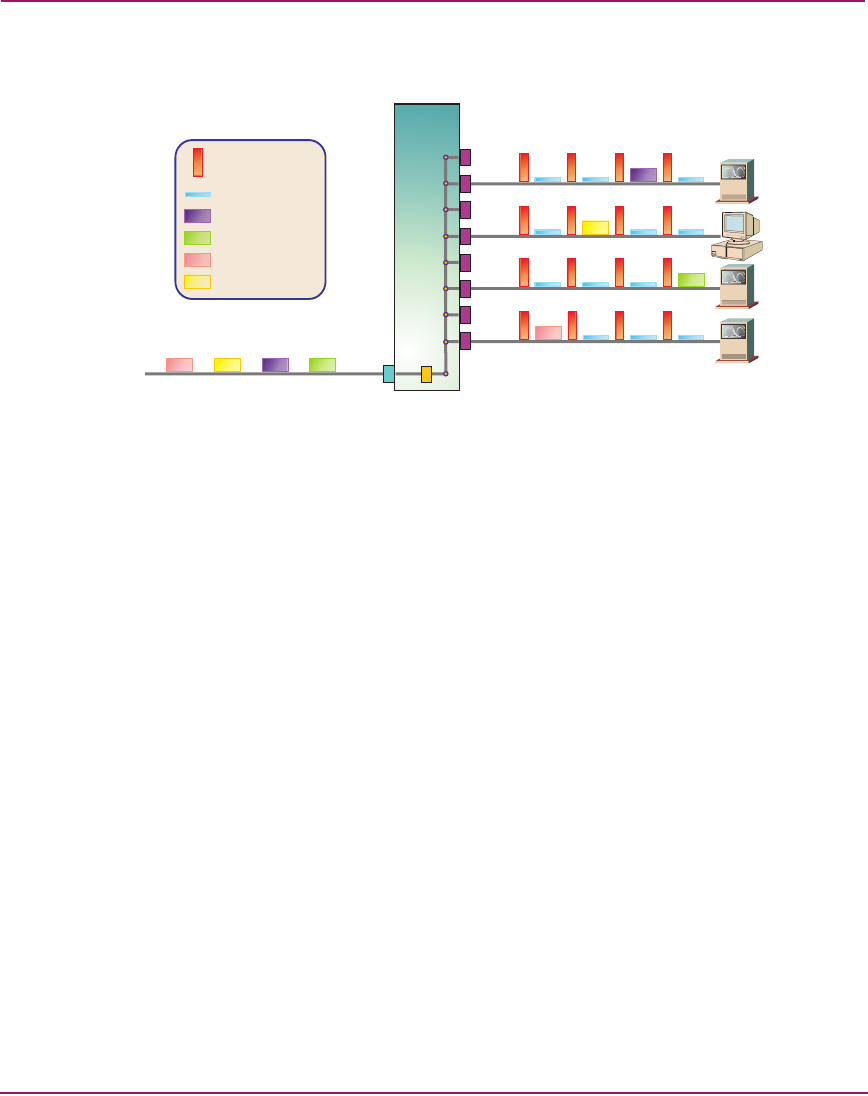FW V06.XX/HAFM SW V08.02.00 HP StorageWorks SAN High Availability Planning Guide (AA-RS2DD-TE, July 2004)
Table Of Contents
- SAN HA Planning Guide
- Contents
- About this Guide
- Introduction to HP Fibre Channel Products
- Product Management
- Planning Considerations for Fibre Channel Topologies
- Fibre Channel Topologies
- Planning for Point-to-Point Connectivity
- Characteristics of Arbitrated Loop Operation
- Planning for Private Arbitrated Loop Connectivity
- Planning for Fabric-Attached Loop Connectivity
- Planning for Multi-Switch Fabric Support
- Fabric Topologies
- Planning a Fibre Channel Fabric Topology
- Fabric Topology Design Considerations
- FICON Cascading
- Physical Planning Considerations
- Port Connectivity and Fiber-Optic Cabling
- HAFM Appliance, LAN, and Remote Access Support
- Inband Management Access (Optional)
- Security Provisions
- Optional Features
- Configuration Planning Tasks
- Task 1: Prepare a Site Plan
- Task 2: Plan Fibre Channel Cable Routing
- Task 3: Consider Interoperability with Fabric Elements and End Devices
- Task 4: Plan Console Management Support
- Task 5: Plan Ethernet Access
- Task 6: Plan Network Addresses
- Task 7: Plan SNMP Support (Optional)
- Task 8: Plan E-Mail Notification (Optional)
- Task 9: Establish Product and HAFM Appliance Security Measures
- Task 10: Plan Phone Connections
- Task 11: Diagram the Planned Configuration
- Task 12: Assign Port Names and Nicknames
- Task 13: Complete the Planning Worksheet
- Task 14: Plan AC Power
- Task 15: Plan a Multi-Switch Fabric (Optional)
- Task 16: Plan Zone Sets for Multiple Products (Optional)
- Index

Planning Considerations for Fibre Channel Topologies
77SAN High Availability Planning Guide
Figure 32: ISL bandwidth limitation
Three 30-megabyte per second (MBps) tape drives and one 10-MBps server are
attached to a switch. Each device uses only a portion of the bandwidth of its
respective H_Port connection. Each H_Port connection illustrates four arbitration
cycles (each cycle won by a single device), one cycle of burst data transmission,
and three idle cycles. The B_Port connection to a director (ISL) transmits
multiplexed burst data from all four devices, for which the summed bandwidths
equal the 1.0625 Gbps capacity of the link. Therefore, connection of additional
devices to the switch adversely impacts B_Port performance.
Server Consolidation
Providing fabric connectivity for multiple low-bandwidth servers (Windows NT
or UNIX-based) by attaching them individually to an expensive Fibre Channel
director is not a cost-effective solution. A practical solution is to consolidate the
servers on an inexpensive loop switch, and then connect the switch to a single
director or edge switch E_Port.
Figure 33 illustrates the consolidation of ten servers (using two unmanaged hubs)
through one B_Port connection to a director. Each server has a 10-MBps
bandwidth, therefore, the sum of the bandwidths of all consolidated servers equals
the B_Port bandwidth of 1.0625 Gbps. Connecting another server to the switch
would exceed the B_Port capability and adversely impact director-to-switch link
performance. Other devices (such as tape drives) should not be connected to a
switch used for server consolidation.
(30 M ps)BD
1
S
1
(10 M ps)B
D
2
(30 M ps)B
D
3
(30 M ps)B
ISL (1 Gbps)
H_Ports
B_Port
Arbitration Cycle
Idle
Burst Data (D )
1
Burst Data (D )
2
Burst Data (D )
3
Burst Data (S )
1










